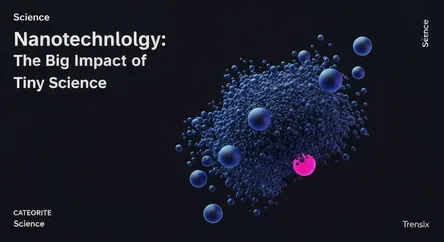Science
Nanotechnology: The Big Impact of Tiny Science

An explainer on nanotechnology, the engineering of tiny materials leading to huge breakthroughs in medicine, electronics, and consumer products.
What is it?
Nanotechnology is the science and engineering of manipulating matter at an incredibly small scale, typically between 1 and 100 nanometers. To put that in perspective, a human hair is about 10,000 nanometers wide. This field involves altering individual atoms and molecules to create new materials and devices. At this "nanoscale," materials often exhibit unique physical and chemical properties, like greater strength or enhanced conductivity, compared to their larger counterparts. It is a highly interdisciplinary field, combining principles from physics, chemistry, biology, and engineering.
Why is it trending?
Nanotechnology is trending due to continuous breakthroughs that are pushing the boundaries of what's possible across many industries. Researchers can now create nanomaterials with enhanced features, leading to innovations in medicine, energy, and electronics. In medicine, it allows for highly targeted drug delivery systems that can attack cancer cells while sparing healthy tissue. In electronics, it enables the creation of smaller, more powerful computer components. Furthermore, advancements are leading to more efficient solar cells and better battery storage, addressing global energy challenges.
How does it affect people?
Nanotechnology is already a part of daily life. It's used in sunscreens to provide better UV protection, in fabrics to make them stain-resistant, and in sporting goods to create stronger, lighter equipment. It has led to improved medical diagnostic tools and treatments. In the tech world, it contributes to faster computers and more efficient devices. Future applications promise even greater impacts, including better water purification systems, more effective medicines, and new methods for sustainable energy production.